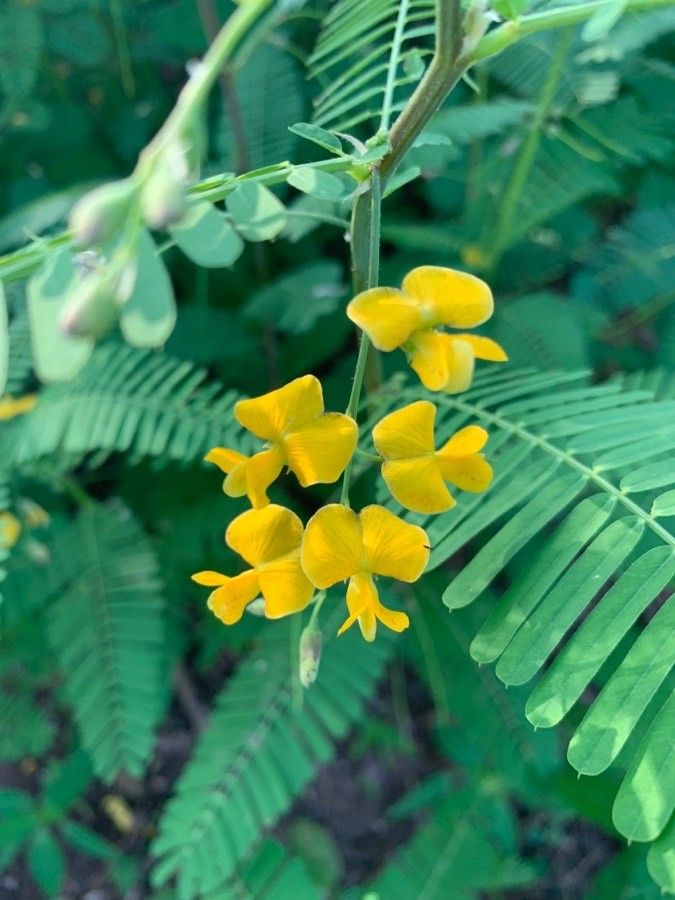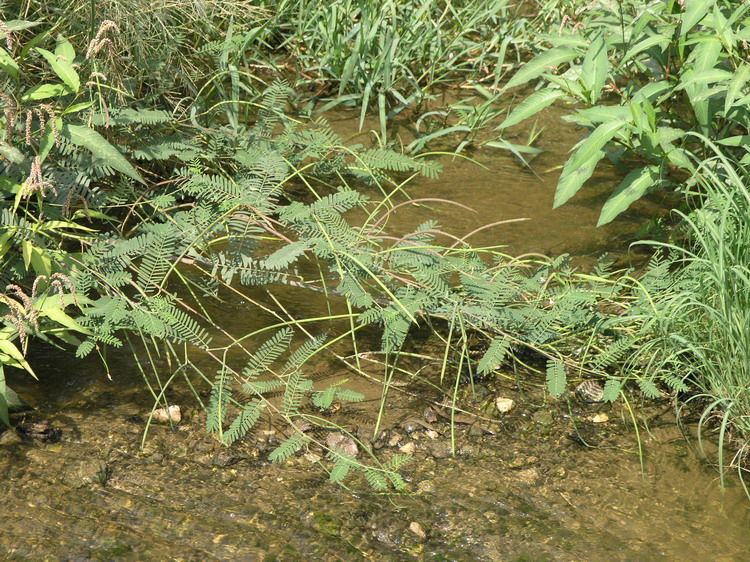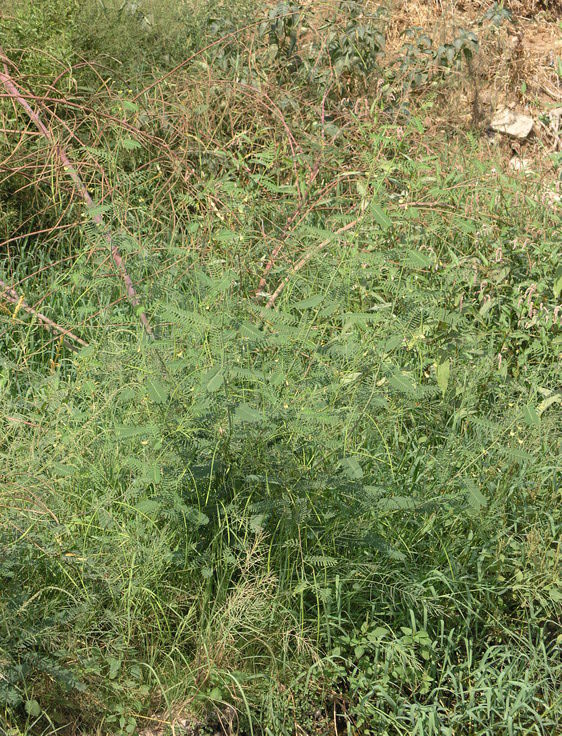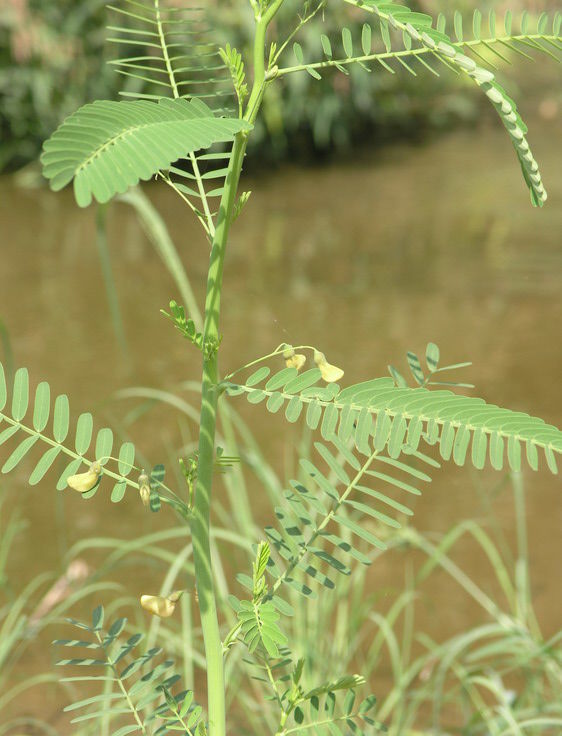Egyptian Rattlepod, Egyptian Senna, Sesban
sesbania sesban
Also known as: ["Rattlepod","Sesban Tree","Wild Sesame"]
Overview
A fast-growing, leguminous tree native to tropical and subtropical regions, valued for its nitrogen-fixing ability and multiple uses in agriculture and traditional medicine.
Benefits & Perks
["fast growing","drought tolerant","wildlife attractant (bees, butterflies, birds)","nitrogen fixing","medicinal use"]
Botanical Classification
| Phylum: | Magnoliophyta |
| Class: | Magnoliopsida |
| Order: | Fabales |
| Family: | Fabaceae |
| Genus: | Sesbania |
| Botanical Name: | Sesbania sesban |
Plant Characteristics
Basic Information
- Category: Trees
- Suitable Location: outdoor garden in tropical or subtropical regions
- Suitable For:
- Is Weed: No
- Allergenicity: low
Environmental Needs
- Climate: {"temperatureRange":"15–35°C"}
- Hardiness: {"zones":"9–11"}
- Misting: rarely required, only if ambient humidity is very low
- Drainage: Fast-draining to prevent waterlogging.
- Soil Type: Well-draining, loamy soil with added organic matter.
Maintenance Level
- Maintenance Level: moderate
- Toughness Level: high
- Pruning Frequency: Annually in late winter or early spring; light pruning can be done as needed.
- Pruning Intensity: Moderate; remove up to one-third of the plant if overgrown.
Care Details
Ideal Sunlight Coverage:
Full sun (6–8 hours of direct sunlight daily); tolerates partial shade but may produce fewer flowers.
Sunlight Tolerance Tips:
Acclimate plants gradually to intense sunlight if moving from shade; protect from harsh midday sun in hot climates; ensure adequate spacing for air circulation.
Care Requirements
Care Difficulty
moderatemoderate
Sunlight
full sun
Rotate plant for even light exposure; use shade cloth in extreme heat; avoid sudden light changes.
Watering
every 3–5 days during active growth, reduce in winter
Water thoroughly until runoff, allow soil to dry between waterings, avoid wetting foliage.
Soil
well-drained, loamy soil with moderate fertility
pH: Slightly acidic to neutral (pH 6.0–7.0).
Avoid heavy clay soils; use raised beds for better drainage; test soil pH annually.
Temperature
Thrives in warm conditions (20–30°C); tolerates mild frosts but prefers frost-free environments.
Avoid sudden temperature fluctuations; protect from drafts; maintain consistent warmth during active growth.
Fertilizing
every 4–6 weeks during growing season
Apply fertilizer after watering to prevent root burn; avoid over-fertilizing to prevent salt buildup; flush soil occasionally to remove excess salts.
Propagation
Methods
Stem cuttings or seeds; stem cuttings root readily in warm conditions.
Step-by-Step Propagation Guide
- Take a 4–6 inch cutting, remove lower leaves, dip in rooting hormone, plant in medium, keep moist and warm.
Best Time: Spring or early summer when the plant is actively growing.
Environment
Warm (20–25°C), humid, and partially shaded environment.
Medium
Well-draining mix of perlite and peat moss or cactus mix.
Hormone
Rooting hormone is optional but recommended for faster rooting.
Timeline
Roots develop in 2–4 weeks; new growth appears in 6–8 weeks.
Tools Needed
Pruning shears, rooting hormone, small pots, well-draining medium.
Quick Tips
Use healthy, non-flowering stems; maintain high humidity with a plastic cover; avoid direct sunlight.
Pruning & Repotting
Pruning Guide
Method
Use clean cuts just above a leaf node or branch junction; avoid leaving stubs.
Pruning Plan
Prune to maintain shape, encourage bushier growth, and remove dead or diseased branches.
Tools
Pruning shears, sterilizing solution, gloves.
Checklist
Sterilize tools, prune dead/diseased wood first, make clean cuts, dispose of clippings, clean up afterward.
Repotting Guide
Best Season
Spring, before the active growing season begins.
Pot Size
Increase pot size by 2–5 cm in diameter; ensure good drainage holes.
Method
Remove plant gently, trim roots if necessary, place in a slightly larger pot with fresh soil, water lightly.
Suggestions
Repot every 2–3 years or when roots fill the pot; beneficial for container-grown plants to refresh soil and provide space.
Checklist
Choose appropriate pot, prepare fresh soil mix, inspect roots, prune if needed, water after repotting, place in suitable light.
Advanced Care Tips
Watering Mastery
Watering Checklist
Check soil moisture, water deeply, ensure drainage, avoid wetting leaves, adjust for season.
How to Apply Water Properly
Water at the base of the plant, ensuring moisture reaches the root zone; water early in the day to minimize evaporation and fungal growth; ensure excess water drains away to prevent waterlogging.
Watering Schedule Tips
Water deeply once the top inch of soil is dry; reduce frequency in winter to prevent root rot.
Soil Improvement
Add perlite or coarse sand for drainage; incorporate compost for fertility; ensure soil is loose and airy.
Temperature Stress Management
Signs of Temperature Issues
Chlorosis or leaf drop in cold stress; wilting or scorching in excessive heat.
Cold Stress
Growth slows or halts; leaves may turn yellow or drop; risk of frost damage in freezing temperatures.
Solution: Move to a warmer location; apply a thick mulch layer to insulate roots; protect with frost cloth if temperatures drop below 5°C.
Hot Stress
Leaves may wilt, scorch, or drop; flowering may be reduced; growth may become stunted.
Solution: Provide shade during peak heat; increase watering frequency; use mulch to retain soil moisture.
Fertilizing Guide
Fertilizing Checklist
Check fertilizer type, dilute correctly, apply to moist soil, avoid foliage contact, adjust for season.
Fertilizing Method
Use a balanced, water-soluble fertilizer diluted to half strength every 4–6 weeks during the growing season; reduce or stop in winter.
Common Problems & Solutions
Toxicity Warning
Cats
Slightly ToxicCats are susceptible to cyanogenic glycoside toxicity from Sesbania sesban, particularly if seeds or young pods are consumed. The cyanide released can impair cellular respiration, causing physiological distress.
⚠️ Symptoms:
🌿 Toxic Parts:
⚡ Toxic If:
if eaten
Dogs
Slightly ToxicThe cyanogenic glycosides in Sesbania sesban can cause mild to moderate toxicity in dogs if ingested. The release of cyanide can disrupt cellular respiration, leading to metabolic stress.
⚠️ Symptoms:
🌿 Toxic Parts:
⚡ Toxic If:
if eaten
Humans
Slightly ToxicSesbania sesban contains cyanogenic glycosides, which can release cyanide upon ingestion, leading to mild to moderate toxicity. The physiological impact includes inhibition of cellular respiration, which can cause metabolic disturbances.
⚠️ Symptoms:
🌿 Toxic Parts:
⚡ Toxic If:
if eaten
Frequently Asked Questions
Q: Is Sesbania sesban suitable for planting in arid regions?
A: Yes, it is highly drought-tolerant and thrives in arid and semi-arid environments.
Q: Does Sesbania sesban have any medicinal uses?
A: Yes, it is used in traditional medicine for treating various ailments, including skin conditions and digestive issues.
Q: Can Sesbania sesban be grown in containers?
A: While possible, it is best suited for outdoor cultivation due to its fast growth and large size.
Quick Reference
| Family: | Fabaceae |
| Care: | moderate |
| Light: | full sun |
| Water: | every 3–5 days during active |
Get Expert Care Tips
Download the Plantious app for personalized care reminders and plant identification!
Google Play App Store








